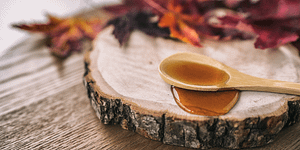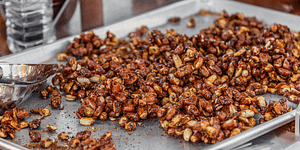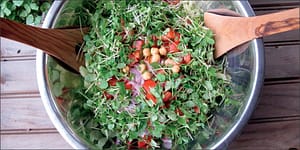Firm & Crumbly Feta-Style Cheese: An Easy Cheesy Recipe

Want to learn how to make different kinds of cheese this winter? With this simple recipe, you’ll be ready to create a crumbly and decadent feta-style cheese at home.
The following is an excerpt from Mastering Artisan Cheesemaking by Gianaclis Caldwell. It has been adapted for the web.
How to Make Feta-Style Cheese
Fortunately, feta-type cheeses are relatively simple to make and usually problem-free. For the beginner cheesemaker they are a great transition cheese to take you to the next skill level. That being said, there is a lot of feta being made that could be better!
Feta can be made from pasteurized milk or raw milk if the cheese will be aged (or used only for home use). As with other cheeses, raw milk brings many nonstarter bacteria into the process along with native enzymes (e.g., lipase) that can lead to greater flavor development. Still, choosing the right culture will help even raw-milk varieties reach their full potential.
Ingredients
- Milk: 1 gal (4 L/8.6 lbs) whole milk
- Culture: scant 1⁄8 tsp (0.2 g) Flora Danica (or equivalent blend)
- Lipase (optional): 2 skewer tips lipase dissolved in 1 tbsp (15 ml) cool, nonchlorinated water
- Calcium chloride (optional): maximum 1⁄4 tsp (1.25 ml) diluted in 1⁄8 cup (30 ml) cool, nonchlorinated water
- Rennet: 1⁄8 tsp (0.7 ml) single-strength rennet diluted in 1⁄8 cup (30 ml) cool, nonchlorinated water
- Salt: 1–2 tbsp (15–30 g) pure salt or follow brining instructions
Steps

Prepare Milk: Warm milk to 88 to 90°F (31–32°C).
Culture: Sprinkle culture on top of milk, and let set 3 to 5 minutes. Stir gently for 2 to 5 minutes.
Additions: Add lipase solution if using, and stir for seconds. Stir in diluted calcium chloride, if using.
Ripen: Maintain temperature at 88 to 90°F (31–32°C) for 45 to 60 minutes.
Rennet and Coagulate: Stir in diluted rennet solution, using an up-and-down motion for 1 full minute. Still milk. Maintain 88°F (31°C) for 45 to 60 minutes or until curd is at the clean-break stage.
Cut: Cut curd mass into 3⁄4- to 1-inch (2–3 cm) cubes, and rest 10 to 15 minutes.
Stir: Stir at 88 to 90°F (31–32°C) for 20 minutes. Settle for 5 minutes.
Drain: Remove excess whey down to the level of curds. Scoop curds into a well-perforated form or pour into a cheesecloth-lined colander. Drain in form, without pres- sure, for 6 to 12 hours. Turn after 1 hour and again in 2 hours. If draining in bags, tie cheesecloth in a knot and hang for 6 to 12 hours. The goal cheese pH at the end of draining is 4.6 to 4.8. Flavor should be tangy but not sour.
Salt: For aged feta place whole cheese in heavy brine for 8 hours per each pound (approx. 4 hours/kg) in one wheel. Then transfer to an 8 to 10 percent brine at 50 to 55°F (10–13°C) solution for aging at 50 to 55°F (10–13°C). For fresh consumption lay blocks on a draining mat, and sprinkle all sides with 1 to 2 tablespoons (15–30 g) dry salt. Let drain at room temperature (under 70°F [21°C]) for 12 hours, and salt again with same amount.
Choosing the Right Culture
Because feta types are usually not heated to over 90°F (32°C) in the vat and most acid development occurs during draining, it is important to choose a starter that can develop the right amount of acid under these conditions. If proper acid levels are not reached over a certain amount of time, the cheese can become vulnerable to flaws such as coliform blowing.
In the following table you will notice some lovely blends that will help create acid and add flavor and aroma during aging. The three blends highlighted in brown are composed of the same bacteria types, but in undefined ratios. Below those are two blends that include some thermophilic bacteria—the heat lovers.
While this may leave you scratching your head (didn’t I just emphasize the low temperature at which this curd is processed?), these thermophiles will be fairly inactive in the vat and during draining but will provide some really helpful enzymes for the breakdown of proteins during aging—if you age it—leading to more flavor and improved texture.
Feta-Style Cheese: Rennet Choices
Rennet choices can include all three major varieties: traditional veal rennet; microbial coagulant; and fermented chymosin. Small scale, traditional feta often is made using rennet paste, which includes lipase from the young animal’s stomach.
Lipase lends its own piquant (spicy) flavor and is also the enzyme that will break down fat, leading to even more flavor.
If you decide to add lipase to your cheese milk, add it just after the culture, dissolving it first in a bit of nonchlorinated water. When purchasing lipase you can select from three (sometimes four) different varieties: calf lipase for the mildest, kid for medium, and lamb for the strongest picante results (the fourth choice offered by some companies is a combination of lamb and kid lipase).
Remember that a little bit of lipase goes a long way, so measure carefully; if you find your cheese is too strong, use less, or none, the next time.
Draining The Cheese
When it is time to drain feta types, you can place the curd in cheesecloth and hang to drain or drain in a form. If the form has microperforations or is lined with mesh, you do not need cheesecloth.
If it is a regular form, cheesecloth will help the curd drain evenly and will make it easier to turn the wheels. Remember, very little to no weight is used for most of these cheese varieties.
During draining, the pH of Greek-type feta should drop to under 4.8, while Bulgarian-style feta finishes a bit higher at 5.0.
The Texture of Feta-Style Cheese
Because the final texture of cheese is greatly influenced by the amount of whey present during draining, as well as by the final pH, these goal numbers are important for the development of the typical feta texture—slightly crumbly and moist. In most cases the higher moisture content means that feta types retain a bit of lactose even after aging, about 1 percent according to the data.
The finished texture should be smooth and free from eyes formed by bacteria and any large openings left by curd that doesn’t knit well together. Small mechanical openings are fine and can actually help transport brine more quickly throughout the cheese.
Recent Articles
What’s so great about oyster mushrooms? First, you can add them to the list of foods that can be grown indoors! They are tasty, easy to grow, multiply fast, and they love a variety of substrates, making oyster mushrooms the premium choice. The following is an excerpt from Fresh Food from Small Spaces by R. J.…
Read MoreCraving something sweet? These delicious maple roasted nuts are the perfect treat to help you push through those end-of-winter blues. The following is an excerpt from Full Moon Feast by Jessica Prentice. It has been adapted for the web. The Magic of Maple: A Rich History Following the Hunger Moon, just before the first thaw…
Read MoreDoes the cold weather have you dreaming about fresh greens and colorful salad? Grow and harvest sprouts indoors to make those dreams a reality! Follow this quick start guide to year-round greens for fresh salad greens in just a couple of weeks! The following is an excerpt from Year-Round Indoor Salad Gardening by Peter Burke. It…
Read More









